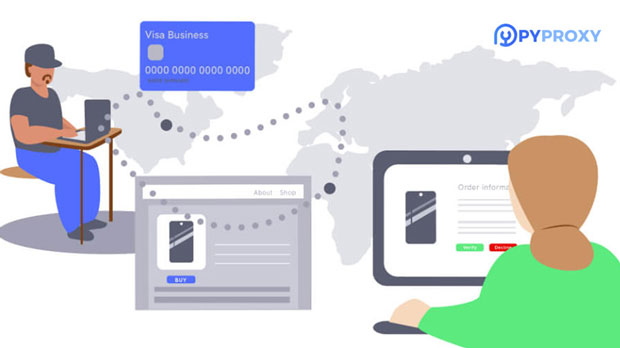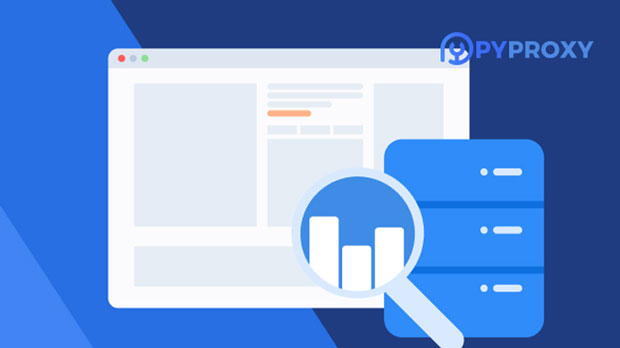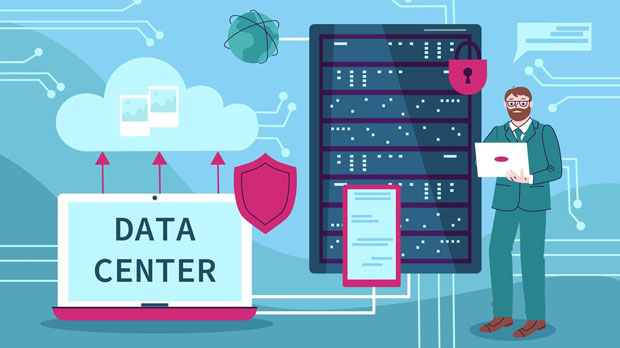In today's digital world, businesses face challenges such as maintaining privacy, avoiding fraud, and optimizing data scraping efforts. Two proxy services— PYPROXY and Iproyal Proxies—offer solutions to these problems, but their application scenarios and business suitability vary. Understanding the differences between these two services can help businesses decide which one fits their specific needs. This article delves into the practical applications of both services, examining their use cases, strengths, and how they can enhance business operations in areas like market research, data aggregation, security, and automation. Introduction to Proxy Services in BusinessProxy services serve as intermediaries between a user and the internet. By using proxies, businesses can enhance privacy, prevent geo-restrictions, and automate tasks like data scraping. The types of proxies provided by services like Pyproxy and Iproyal Proxies vary in terms of reliability, speed, and anonymity. Their specific features make them more or less suitable for different business applications.Pyproxy: Ideal for Data Scraping and Market ResearchPyproxy is a proxy service renowned for its high reliability, wide range of IP addresses, and ability to handle massive amounts of data without detection. It is particularly effective for businesses in industries that require large-scale data collection or market research.1. Web Scraping for E-commerceE-commerce companies can use Pyproxy to gather competitor pricing data, product listings, and customer reviews. Web scraping can help businesses track market trends, assess competitor strategies, and optimize their own product offerings. Pyproxy’s wide pool of IP addresses ensures that scraping efforts are not blocked by websites, offering a seamless experience for e-commerce businesses looking to gather data in real-time.2. Price Monitoring and Dynamic PricingPyproxy enables businesses to track price fluctuations across various websites, particularly in the travel, hospitality, and retail sectors. By monitoring competitor pricing, companies can adjust their prices in real-time and adopt dynamic pricing strategies to stay competitive in a fast-changing market.3. Market Research and Consumer Behavior AnalysisBusinesses involved in market research can use Pyproxy to collect consumer behavior data from social media platforms, product review websites, and forums. This data helps companies understand consumer sentiment, preferences, and emerging trends. With its advanced IP rotation capabilities, Pyproxy ensures that the data collection process remains undetected by websites, enabling more accurate and comprehensive results.Iproyal Proxies: Ideal for Security, Automation, and Regional AccessIproyal Proxies cater to businesses that require secure, automated processes or those looking to access region-specific content. With a focus on high-quality residential IPs, Iproyal Proxies is an excellent choice for businesses needing reliable access to location-restricted websites or requiring enhanced security for sensitive data operations.1. Ad Verification and Fraud PreventionIn digital advertising, Iproyal Proxies can help businesses detect fraudulent activities such as click fraud or misleading ads. With residential IPs that mimic real users, businesses can verify whether their ads are being displayed accurately and if clicks are coming from genuine sources. This ensures that advertising campaigns deliver optimal results and reduce wasted budgets on fraudulent activities.2. Automated Business ProcessesMany companies rely on automated systems for tasks such as account creation, content posting, and social media management. Iproyal Proxies provide a safe and efficient way to manage these automation processes without the risk of being flagged or blocked. With fast and secure residential proxies, businesses can perform bulk operations like signing up for accounts or posting large quantities of content without interruption.3. Access to Region-Locked ContentFor businesses involved in international operations, Iproyal Proxies allow access to region-specific content or data that may be restricted in certain countries. This feature is particularly useful for businesses in the entertainment industry, travel sector, or market research firms that need to gather insights from various regions without facing geo-blocking restrictions.Comparing Pyproxy and Iproyal Proxies: A Detailed Look at Their StrengthsWhile both Pyproxy and Iproyal Proxies offer robust services, each one excels in different areas.1. Anonymity and IP Address PoolPyproxy excels in its extensive and diverse IP address pool, making it an excellent choice for businesses needing large-scale data scraping and market research. It provides proxies with higher anonymity levels, reducing the risk of being detected by websites.Iproyal Proxies, on the other hand, specializes in residential proxies, offering a more secure and authentic browsing experience. This makes Iproyal a better choice for businesses focused on security and regional access, especially when dealing with sensitive data.2. Speed and PerformanceBoth services offer high-speed proxies, but Pyproxy is better suited for tasks that require fast data collection. This is particularly important for businesses that rely on real-time information, such as e-commerce or price monitoring.Iproyal Proxies, with its residential IPs, may have slightly slower speeds compared to Pyproxy, but it excels in providing a more secure connection. This makes Iproyal ideal for businesses concerned with privacy and security in their operations.3. Pricing and Cost-EffectivenessPyproxy’s pricing tends to be more cost-effective for businesses that need to run large-scale data scraping projects. Its affordable pricing structure makes it a good choice for market research firms or e-commerce businesses on a budget.Iproyal Proxies, with its premium services, offers higher-quality proxies at a higher price. However, the increased reliability, security, and access to regional content justify the higher cost for businesses in need of secure operations or location-based services.Conclusion: Choosing the Right Proxy for Your Business NeedsWhen deciding between Pyproxy and Iproyal Proxies, businesses must consider their specific needs. Pyproxy is ideal for large-scale data scraping, market research, and competitive analysis, making it a great choice for e-commerce companies and market researchers. On the other hand, Iproyal Proxies shines in areas like security, automation, and regional access, making it the go-to solution for businesses concerned with fraud prevention, ad verification, and location-restricted content access.Ultimately, both proxy services offer unique advantages, and the right choice depends on the business's requirements. By carefully evaluating the specific use cases and objectives, companies can select the proxy service that best aligns with their goals and operational needs.
Sep 10, 2025



































































